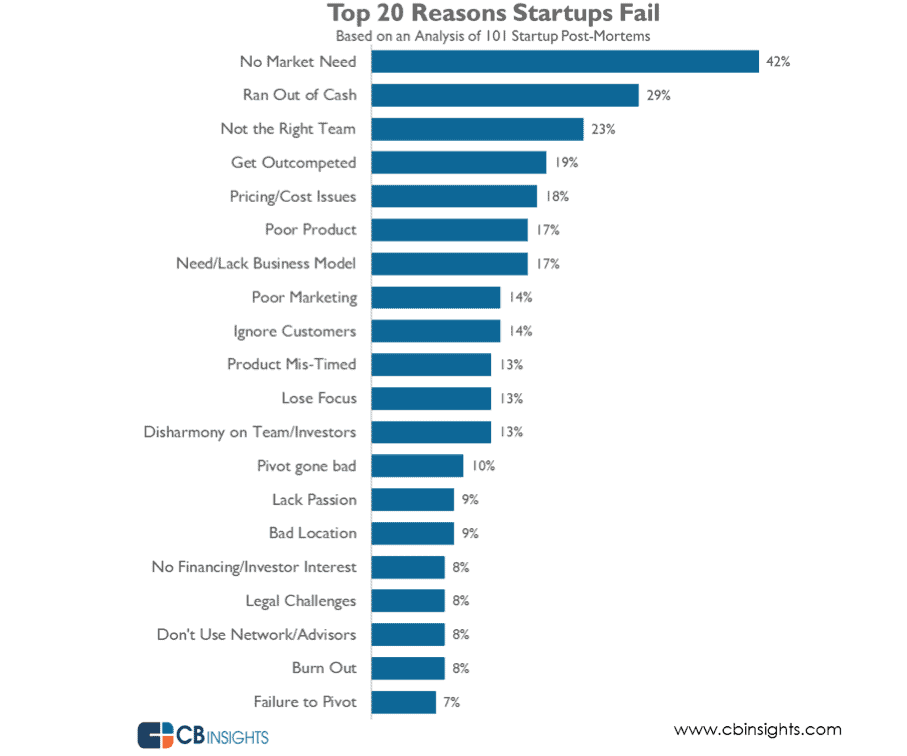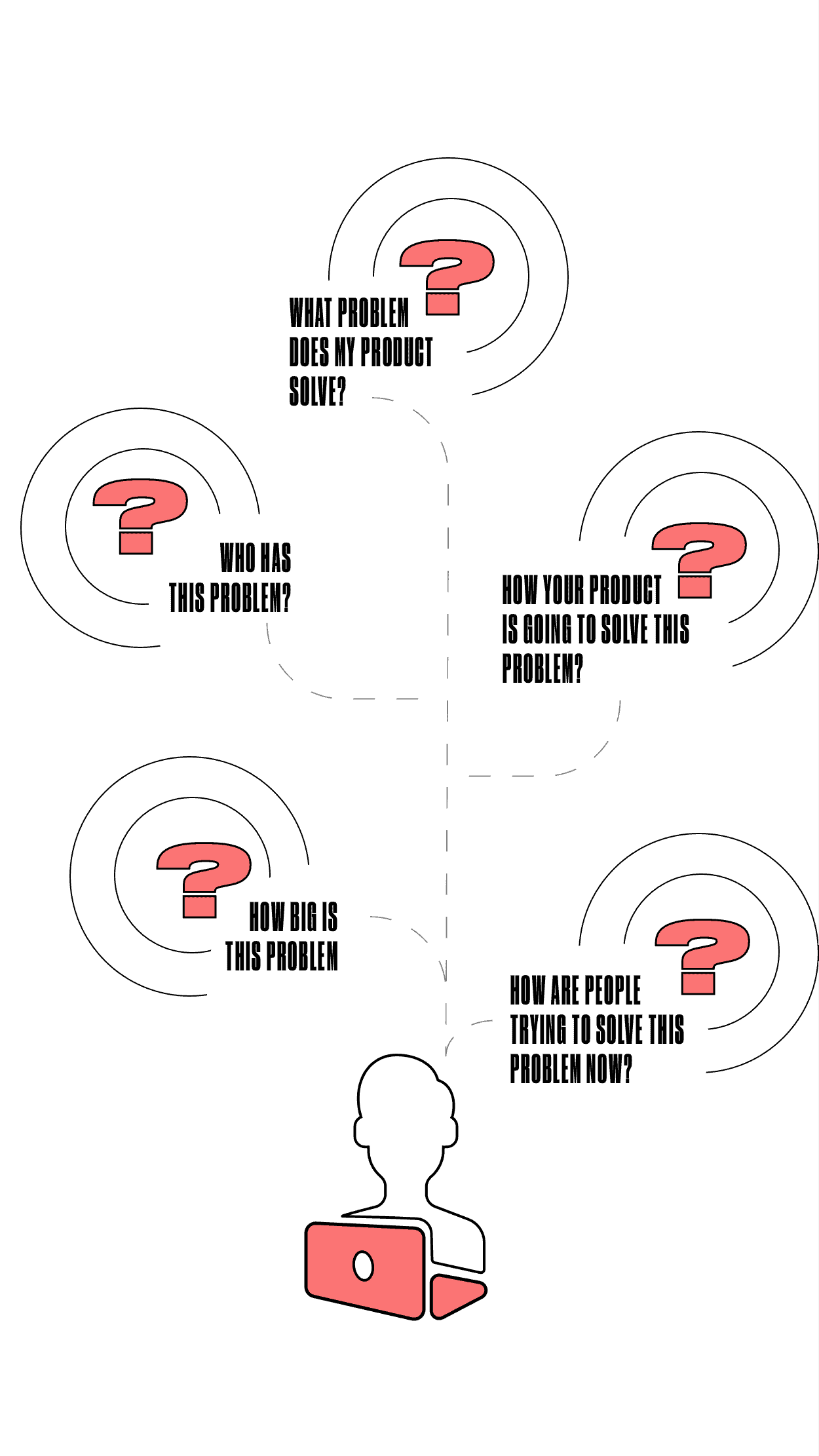
RISK MITIGATION IN THE PRODUCT DEVELOPMENT PROCESS
Being a product owner can be overwhelming – like you’re trying to juggle lots of things at once. Between defining the product scope, creating a great experience for your customers, working with cross-functional teams, and understanding when something is your number one priority, all focus should be on that.
In this list of never-ending tasks, the key one is product risk management. Risks are almost inevitable, and to mitigate risks, you need to prepare yourself. Even a simple activity can turn into an unexpected problem. Addressing and realizing those risks in advance can save you time, costs, and sometimes your product. When you plan the digital product development process, first of all, answer this question: “do I understand the problem I’m solving and is this problem worth solving?”
In this article, you’ll find more about risk mitigation planning, why you need it, and how to build products customers actually need.
WHY DO PRODUCTS FAIL?
First of all, let’s figure out the reasons that something can go wrong in your project. Here are some of the most common product development risks.
RISK 1: CREATING PRODUCT WITH NO MARKET DEMAND
As an industry expert, you might think that you know what your users need. This assumption creates a risk of working on a product that, as a result, will be used only by you and possibly by several more people (sorry for being straightforward). The risk is higher as you grow the product idea on assumptions or without conducting enough user research. As a result, mitigating such a risk becomes quite a challenge.
Starting a business is hard. A survey conducted by CB Insights among 101 failed startups states that 70% of startups fail because there is NO market need for a product (42%). It follows that companies should build products only according to the real needs of their users.

You should answer several questions to minimize the risk of building a product that doesn’t meet users’ needs and wants.

Your answers will help you differentiate your product and create a unique value proposition (UVP).
RISK 2: SETTING UNREALISTIC DEADLINES
There’s no universal formula to guarantee project completion on time. However, a few tips can help you mitigate the risk of failure in meeting the project deadlines.
- Create a project roadmap with clear objectives, expected results, and ways to achieve them. Otherwise, you will work without understanding the final result the team should achieve.
- Once you have a roadmap, you may want to make some adjustments. For example, you decided to follow the latest web design trends and add more complex and dynamic elements such as animated scrolling. It’s fine to add fresh solutions but keep in mind that frequent changes require more time to develop and test, and usually result in project delays. When you create a project scope, try to think through all the details as carefully as possible, so that during the implementation phase there will be fewer unexpected tasks. After all, the best risk mitigation strategy is taking that risk into account before it even arises.
RISK 3: UNDERESTIMATING HUMAN RESOURCES
Things happen. When the work on the product is in full swing, one of the developers leaves the project.
As a result, you might experience team members’ change-over or lack of qualified specialists. To minimize risks associated with human resources, try to organize team members into small groups. This way, team members can jointly plan a project, share knowledge, perform code reviews and work on tasks from the get-go. Also, the team should easily perform work if one of its members is temporarily absent or has left the team.
RISK 4: CHOOSING A WRONG TECHNOLOGY
Mitigating risks associated with technology is painful, and most importantly, pricey. That’s why before you start working on the project, you’ll want to be meticulous when deciding on a tech stack and whether it suits your business goals. This choice can make or break the entire product performance and UX. Here are four (at least basic) rules we recommend to keep an eye on when deciding on a new technology stack for your next project:
- Make sure that tech is correctly updated. Old and legacy technology can negatively impact your business. Failing to keep up with the times can turn against you. Increased costs, crashes, and system downtime decreased team productivity, legal compliances, and security holes are just the tip of the iceberg and consequences of using outdated technology. So consider regular upgrades an essential part of your strategic toolkit.
- Focus on ongoing support. You don’t want your product to focus on a system you can’t be confident about. This means that if you decide to choose a particular technology, make sure it’s actively developing with constant updates. Otherwise, you risk ending up with a product with an uncertain future.
- Choose technology that is reliable and tested. Don’t blindly follow trends. Consider whether the stack you are about to choose is just a fad or a well-established technology with a good track record.
- Keep in mind personal requirements. When choosing a stack, one may rely on the technical expertise of the team. It’s not quite right. First of all, choose a technology based on the problem you want to solve. Think about who your users are and how to provide them with a great user experience and product performance. For example, if your project is complex the combination of multiple programming languages is inevitable. On the other hand, if you aim to enter the market quickly, you can start with less sophisticated technologies.
HOW TO MITIGATE RISKS IN THE DIGITAL PRODUCT DEVELOPMENT PROCESS?
Now that you are aware of common risks associated with product development, it’s time to work on their mitigation. But first, what is risk mitigation at all? In the business realm, risk mitigation refers to developing a set of measures that allow for eliminating or minimizing the likelihood of risks and their impact on business effectiveness. With those measures in place, it’s easy to make any risk controllable.
Here are a couple of things to catch up on when managing risks and your project:
- Start with identifying the risks early on in your project.
- Communicate about risks.
- Prioritize the risks.
- Understand the reason for and impact of the risks.
- Develop a risk mitigation plan.
Let’s go through each of them together with Michael Scott.
1. START WITH IDENTIFYING THE RISKS EARLY ON IN YOUR PROJECT
You can’t mitigate risk if it’s unknown. For starters, try to make assumptions, brainstorm all potential risks, and write them down. This way, you structure all of your concerns. Think of all the possible things that can go wrong and note them. Don’t forget to refer to past projects, as this is a source of real risks that you can prevent in the current project. After making a list of possible risks and reviewing them, assign who is responsible for what risk.
2. COMMUNICATE ABOUT THE IMPORTANCE OF RISK MITIGATION
Don’t be afraid, and don’t avoid talking about risks. On the contrary, pay close attention to risk communication during team meetings and ensure that everyone in the team perceives risk management as an integral part of the project.
3. PRIORITIZE THE RISKS
Prioritization focuses on what matters most in the risk mitigation process. However, ‘what matters most’ can vary during the project: some risks may have a higher impact and probability than others. To evaluate what risks may have the most negative impact and have a higher probability of occurrence, create or use ready-made evaluation tools to categorize and prioritize the risks.

4. UNDERSTAND THE REASON FOR AND IMPACT OF THE RISKS.
Before defining how to manage risks, the project team should identify what can cause the identified risks. Think about the effects and consequences of a particular risk.
First, let the entire team answer these questions as accurately as possible:
- What can potentially cause each risk?
- How will each risk impact the project in terms of costs and product quality?
The acquired information will provide valuable insights into your project, and you will find it helpful later when mitigating risk.
5. DEVELOP A RISK MITIGATION PLAN
For each major risk identified, create a contingency plan to manage it. You then act according to how you’ve prioritized those risks. Arrange a meeting with your project team and try to find answers to the following questions:
- What can be done to mitigate the probability of each risk?
- How to manage each risk effectively, should it occur?
- How to make sure that opportunities are not missed?
Answering these questions allows your team to improve the digital product development process. Based on the above-mentioned points, prepare an action plan and convert it into feasible tasks. Once you implement the risk mitigation plan, your work isn’t finished. Risks are dynamic and tend to transform, evolve, and reappear throughout the entire project life cycle.
SUMMING UP
Yes, risk mitigation might seem like a daunting task. But if you do your homework and embed a risk management strategy into the digital product development process, you can reduce the chances of project overrun, escalating costs, resources challenges, and more. If you want to discuss how we handle risk in detail, please connect with us.



